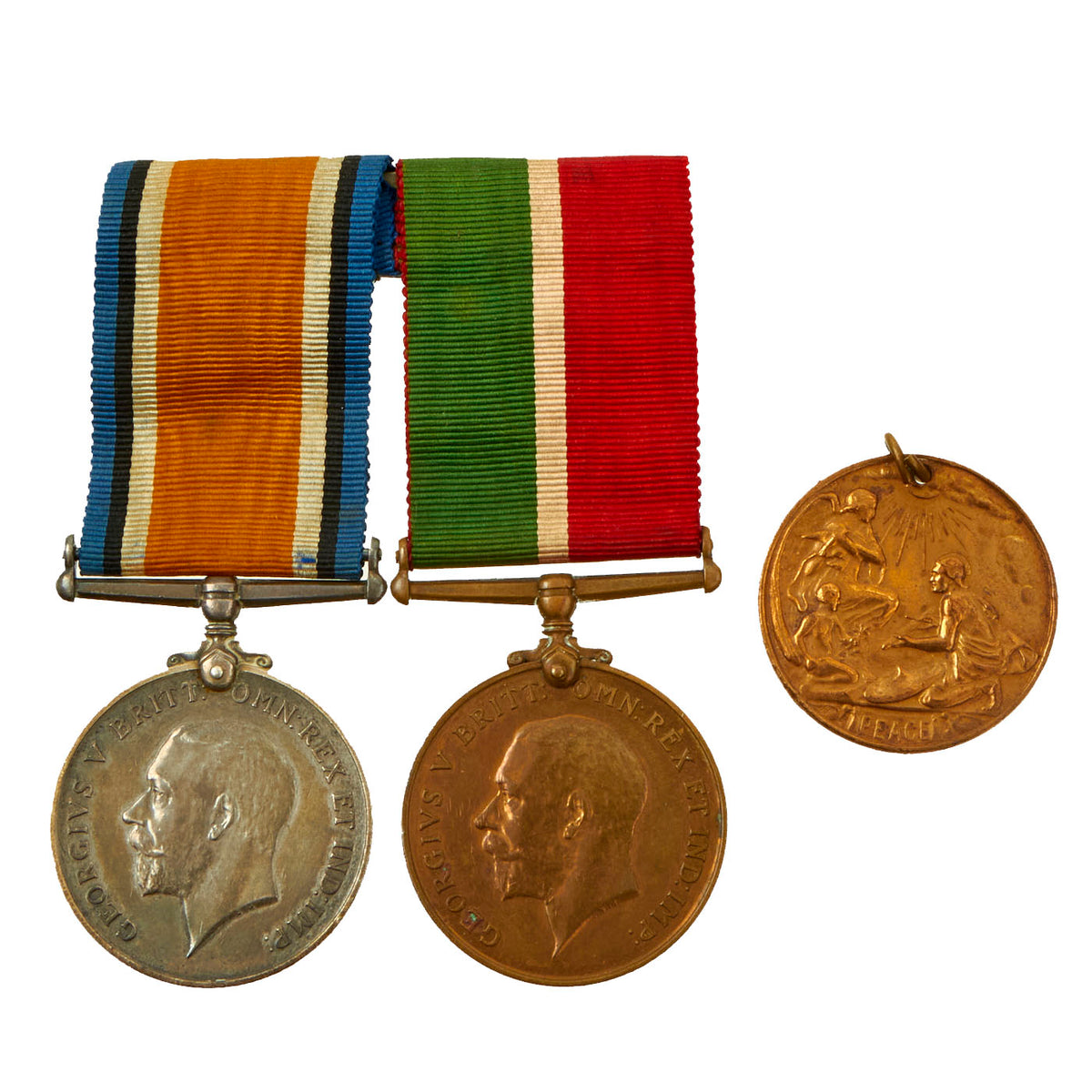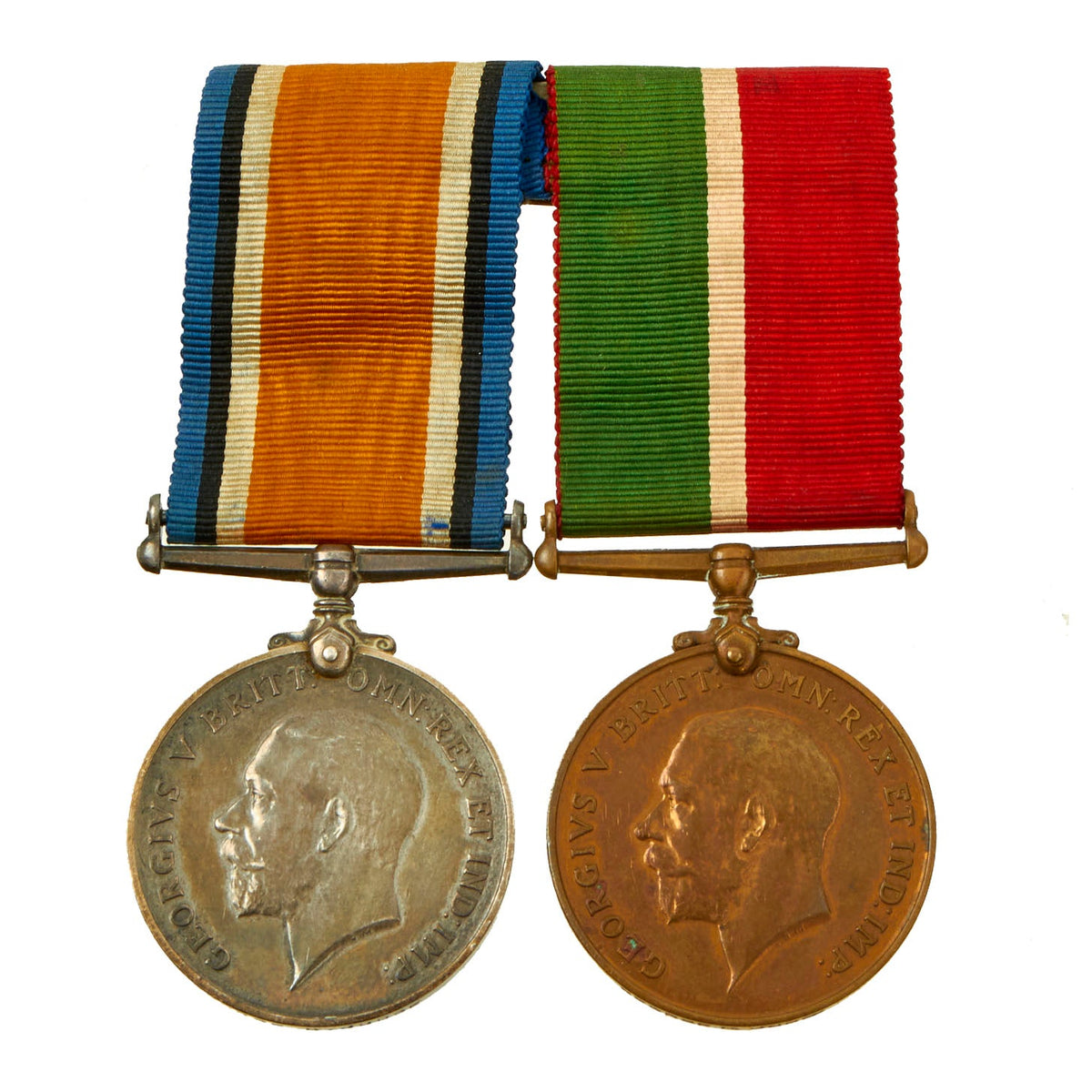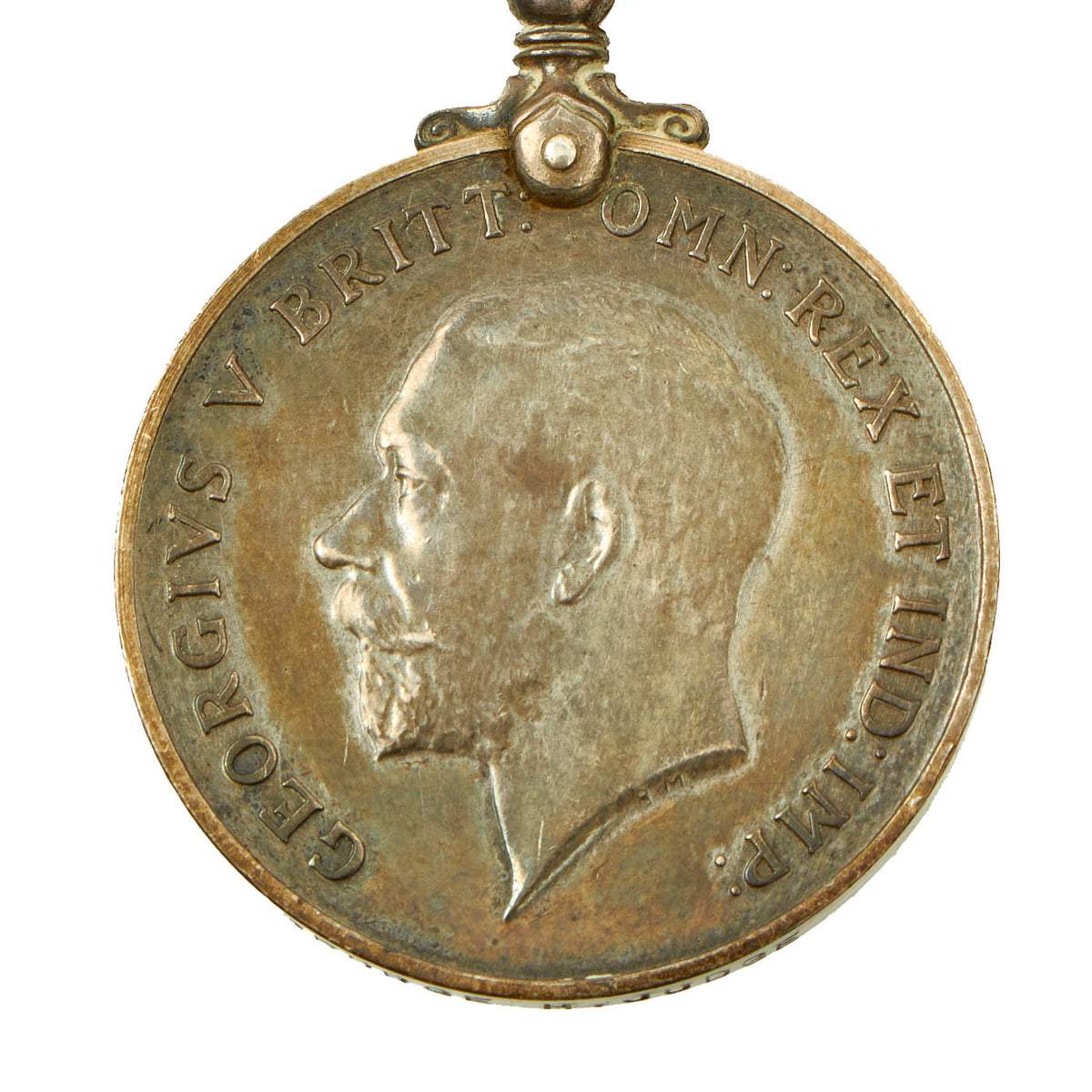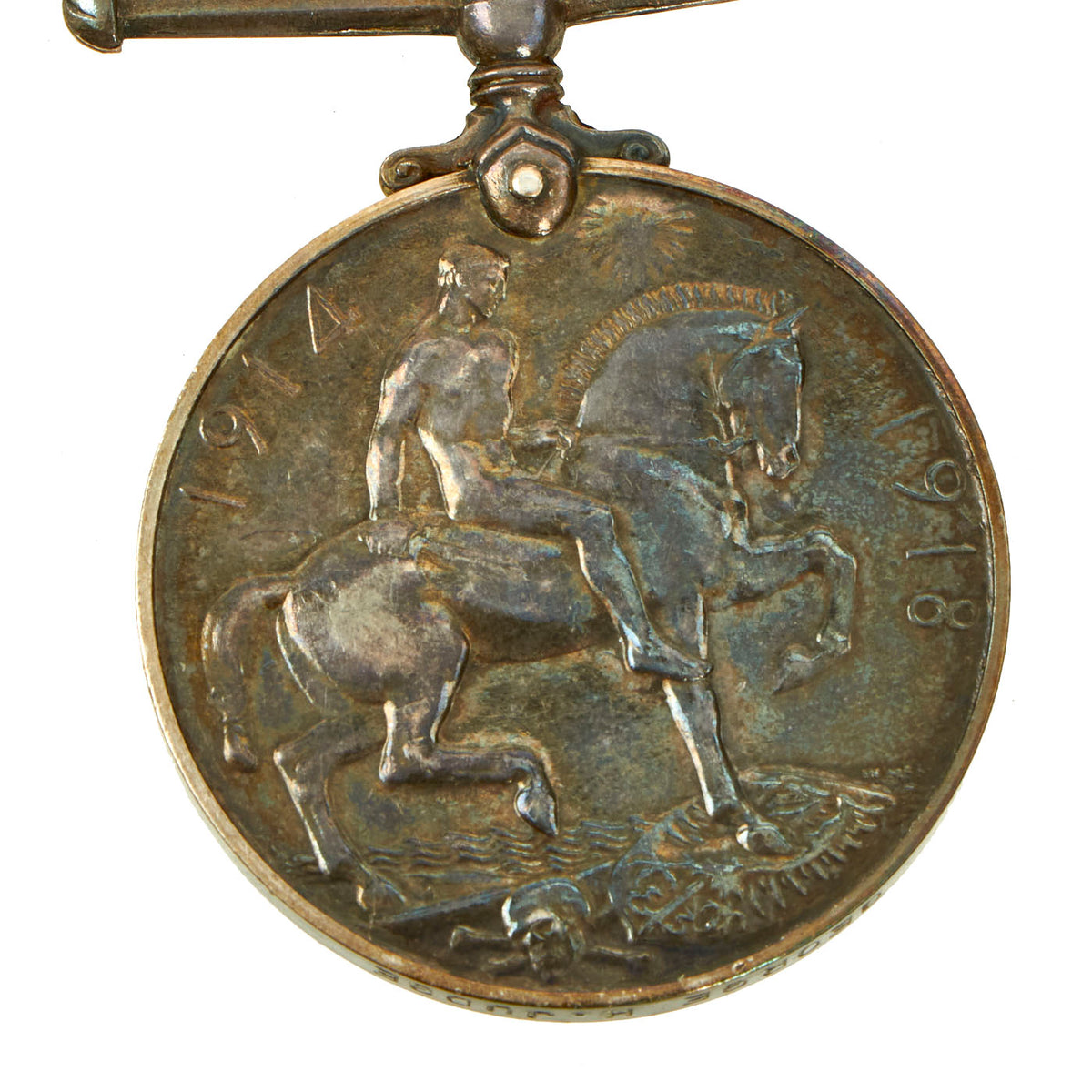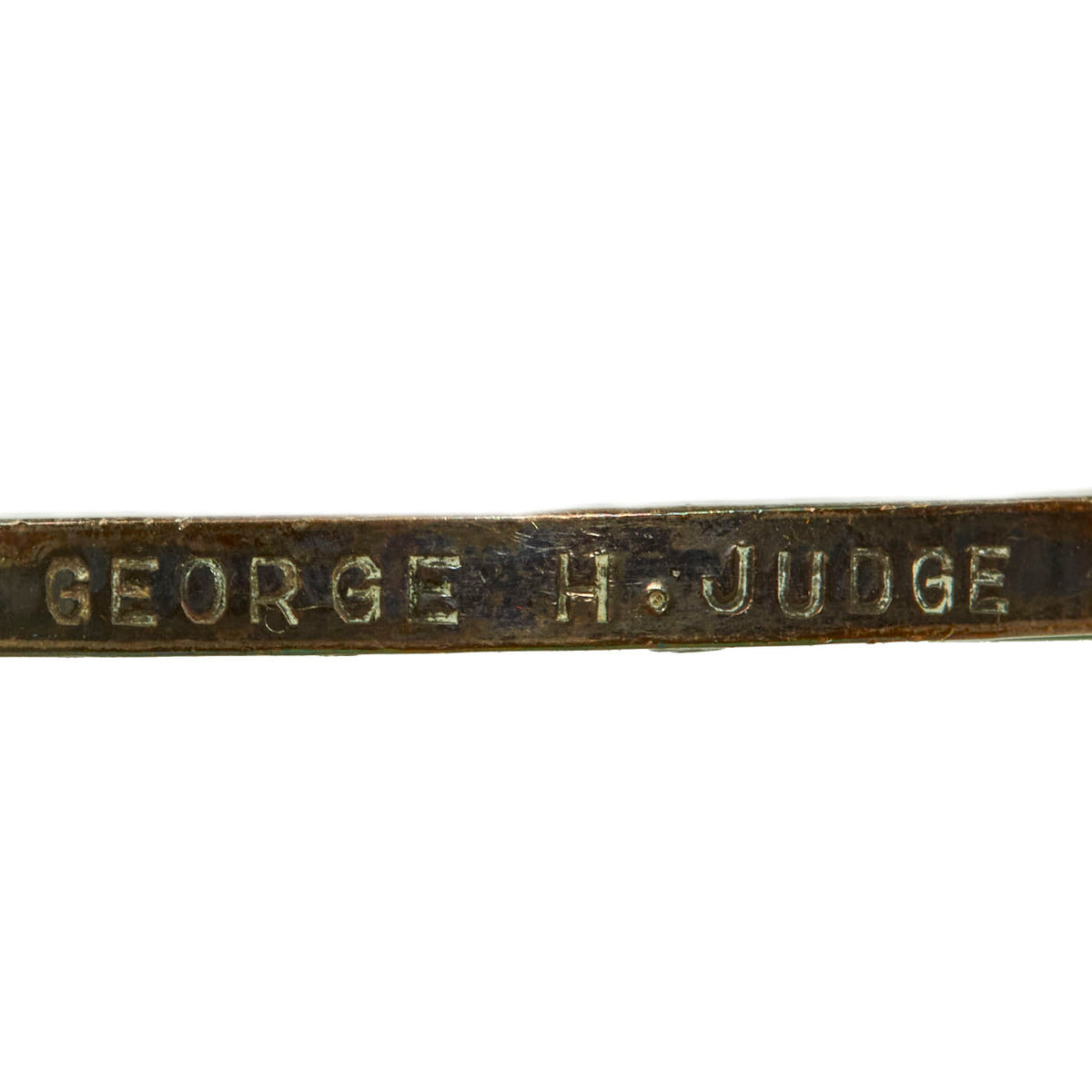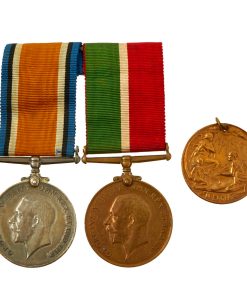Original British WWI British Merchant Navy Name Engraved Merchant Marine Grouping – 3 Items Original Items
$ 195,00 $ 78,00
Original Items: Only One Lot of 3 Available. The Merchant Navy is the maritime register of the United Kingdom and comprises the seagoing commercial interests of UK-registered ships and their crews. Merchant Navy vessels fly the Red Ensign and are regulated by the Maritime and Coastguard Agency (MCA). King George V bestowed the title of “Merchant Navy” on the British merchant shipping fleets following their service in the First World War;[1] a number of other nations have since adopted the title. Previously it had been known as the Mercantile Marine or Merchant Service, although the term “Merchant Navy” was already informally used from the 19th century.
The medals in this grouping:
– British War Medal: The British War Medal is a campaign medal of the United Kingdom which was awarded to officers and men of British and Imperial forces for service in the First World War. Two versions of the medal were produced. About 6.5 million were struck in silver and 110,000 in bronze, the latter awarded to, among others, the Chinese, Maltese and Indian Labor Corps.
The medal, struck by the Royal Mint, is a silver or bronze disk, 36 millimeters (1.4 in) in diameter, with a straight clasp suspender without swivel.
The obverse shows Sir Bertram Mackennal’s bareheaded effigy of King George V facing left, with the legend “GEORGIVS V BRITT: OMN: REX ET IND: IMP:” (George V, King of all the British Isles and Emperor of India).
The reverse, designed by William McMillan, shows Saint George naked on horseback and armed with a short sword, an allegory of the physical and mental strength which achieved victory over Prussianism. The horse tramples on the Prussian eagle shield and the emblems of death, a skull and crossbones. In the background are ocean waves and just off-center near the right upper rim is the risen sun of Victory. The years “1914” and “1918” appear on the perimeter in the left and right fields respectively.
The watered silk ribbon is 32 millimeters (1.25 in) wide, with a 3 millimeters wide royal blue band, a 2 millimeters wide black band and a 3 millimeters wide white band, repeated in reverse order and separated by a 16 millimeters wide orange band. The colors are not thought to have any particular symbolic significance.
Rim engraved as: George H. Judge
– Mercantile Marine War Medal: The Mercantile Marine War Medal was established in 1919 and awarded by the Board of Trade of the United Kingdom to mariners of the British Mercantile Marine (later renamed the Merchant Navy) for service at sea during the First World War.
The Mercantile Marine War Medal is a disk, struck in bronze and 36 millimeters in diameter. The straight clasp non-swivelling suspender is attached to the medal with a single-toe claw mount and a pin through the upper edge of the medal. The recipient’s name only is impressed on the rim in sans-serif capital letters and the first given name is usually in full.
The obverse is identical to that of the British War Medal and shows Sir Bertram Mackennal’s bareheaded effigy of King George V facing left, with the legend “GEORGIVS V BRITT: OMN: REX ET IND: IMP:” (George V, King of all the British Isles and Emperor of India).
The reverse, designed by Harold Stabler, shows a merchant steamship plowing through heavy seas, with an enemy submarine sinking on portside and a sailing ship in the background. The exergue is inscribed, in three lines, “FOR•WAR•SERVICE“, “MERCANTILE•MARINE” and “•1914–1918•“. Around the rim enclosing the whole image is a laurel wreath.
The ribbon is 32 millimeters (1.25 inches) wide, with a 13½ millimeters wide green band, a 5 millimeters wide white band and a 13½ millimeters wide red band, representing a ship’s starboard and port running lights with the masthead steaming light in the center.
Rim engraved as: George H. Judge
The 3rd item in this grouping is a commemorative medallion on the conclusion of the Great War. We have seen this being identified as “peace” medals and being struck at the royal mint.
This is a wonderful grouping that comes more than ready for further research and display.
Fast Shipping with Professional Packaging
Thanks to our longstanding association with UPS FedEx DHL, and other major international carriers, we are able to provide a range of shipping options. Our warehouse staff is expertly trained and will wrap your products according to our exact and precise specifications. Prior to shipping, your goods will be thoroughly examined and securely secured. We ship to thousands clients each day across multiple countries. This shows how we're dedicated to be the largest retailer on the internet. Warehouses and distribution centres can be located throughout Europe as well as the USA.
Note: Orders with more than one item will be assigned a processing date depending on the item.
Before shipping before shipping, we'll conduct a thorough inspection of the items you have ordered. Today, the majority of orders will be delivered within 48 hours. The delivery time will be between 3-7 days.
Returns
The stock is dynamic and we cannot completely manage it because multiple stakeholders are involved, including our factory and warehouse. So the actual stock may alter at any time. It's possible that you may not receive your order once the order has been made.
Our policy is valid for a period of 30 days. If you don't receive the product within 30 days, we are not able to issue a refund or an exchange.
You can only return an item if it is unused and in the same state as the day you received it. You must have the item in its original packaging.
Related products
Uncategorized
Uncategorized
Uncategorized
Uncategorized
Band of Brothers ORIGINAL GERMAN WWII Le. F.H. 18 10.5cm ARTILLERY PIECE Original Items
Uncategorized
Uncategorized
Uncategorized
Uncategorized
Uncategorized
Uncategorized
Uncategorized
Uncategorized
Uncategorized
Uncategorized
Uncategorized
Uncategorized
Uncategorized
